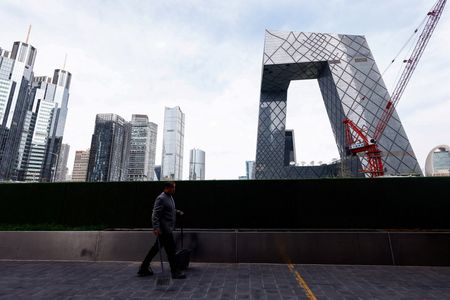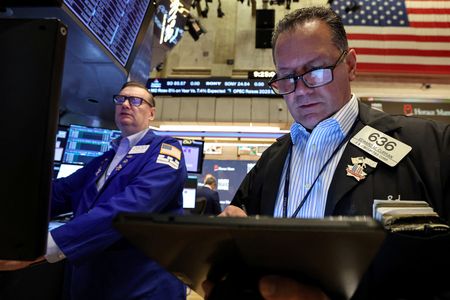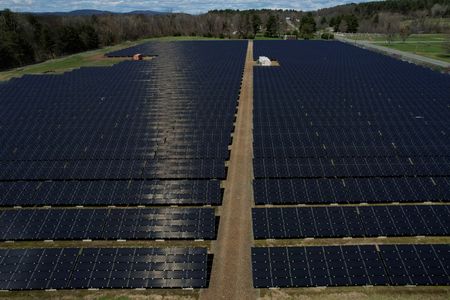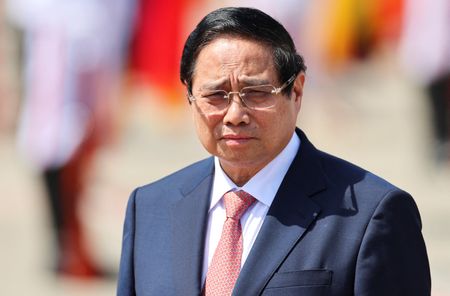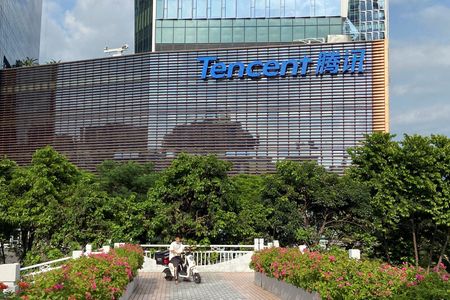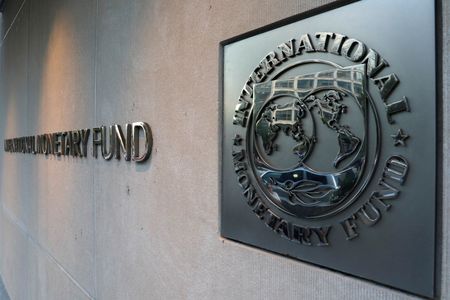By Kevin Yao and Liz Lee
BEIJING (Reuters) -China’s new bank loans tumbled more than expected in April as a protracted trade war with the United States further eroded the market’s appetite during a typically slow month for loan demand.
Chinese banks extended 280 billion yuan ($38.87 billion) in new yuan loans in April, below analysts’ forecasts and plummeting from March’s 3.64 trillion yuan, according to Reuters calculations based on data released by the People’s Bank of China.
In a Reuters poll, analysts had expected April new yuan loans would reach 700 billion yuan, compared with 730 billion yuan a year earlier.
“Bank loan growth resumed its slowdown last month, but broad credit growth continued to accelerate on the back of a surge in government bond issuance,” Capital Economics said in a note. “While monetary easing should help drive up private credit demand over the coming months, we only expect a modest pick-up.”
Total outstanding yuan loans rose at a record-low annual pace of 7.2% in April. Analysts had expected the rate to remain unchanged from 7.4% in March.
The central bank does not provide monthly breakdowns. Reuters calculated the April figures based on the bank’s January-April data released on Wednesday and earlier reported January-March figures.
Banks extended a total of 10.06 trillion yuan in new loans in the first four months, down from 10.19 trillion yuan in the same period last year.
Lending is typically slow in April as Chinese banks front-load it at the beginning of the year to win high-quality customers and gain market share.
Household loans, including mortgages, contracted 521.6 billion yuan in April, compared with a rise of 985.3 billion yuan in March, while corporate loans dipped to 610 billion yuan from 2.84 trillion yuan, according to Reuters calculations based on central bank data.
On the whole, however, borrowers’ confidence has been undermined by a prolonged property crisis, local government debt and deflationary pressures.
In April, the trade war with the United States escalated, shrinking credit appetite further and adding to an already cautious mood among households and businesses.
China’s economy expanded at a faster-than-expected pace in the first quarter, and the government has maintained a growth target of around 5% this year, but analysts fear U.S. tariffs could shift momentum sharply lower.
TRADE TENSIONS
Last week, the central bank stepped up efforts to cushion the impact of a trade stand-off with Washington, announcing a raft of stimulus measures, including interest rate cuts and a major liquidity injection.
Since then, a meeting between U.S. and Chinese officials in Switzerland this weekend raised hopes of easing tensions, but investors worry negotiations will be slow amid persistent global economic risks.
The U.S. administration said on Monday the two sides had agreed to a 90-day pause under which both Washington and Beijing would cut their import tariffs.
Wednesday’s central bank data showed broad M2 money supply grew 8.0% from a year earlier, ahead of analysts’ 7.3% forecast in a Reuters poll and 7.0% growth in March.
The narrower M1 money supply rose 1.5% year-on-year, compared with 1.6% in March.
Outstanding total social financing (TSF), a broad measure of credit and liquidity in the economy, grew 8.7% from a year earlier, quickening from a 8.4% rise in March and hitting a 13-month high. More government bond issuance aimed at boosting the economy helped TSF growth.
TSF includes off-balance sheet forms of financing that exist outside the conventional bank lending system, such as initial public offerings, loans from trust companies, and bond sales.
(Reporting by Kevin Yao and Liz Lee;Editing by Tomasz Janowski)

